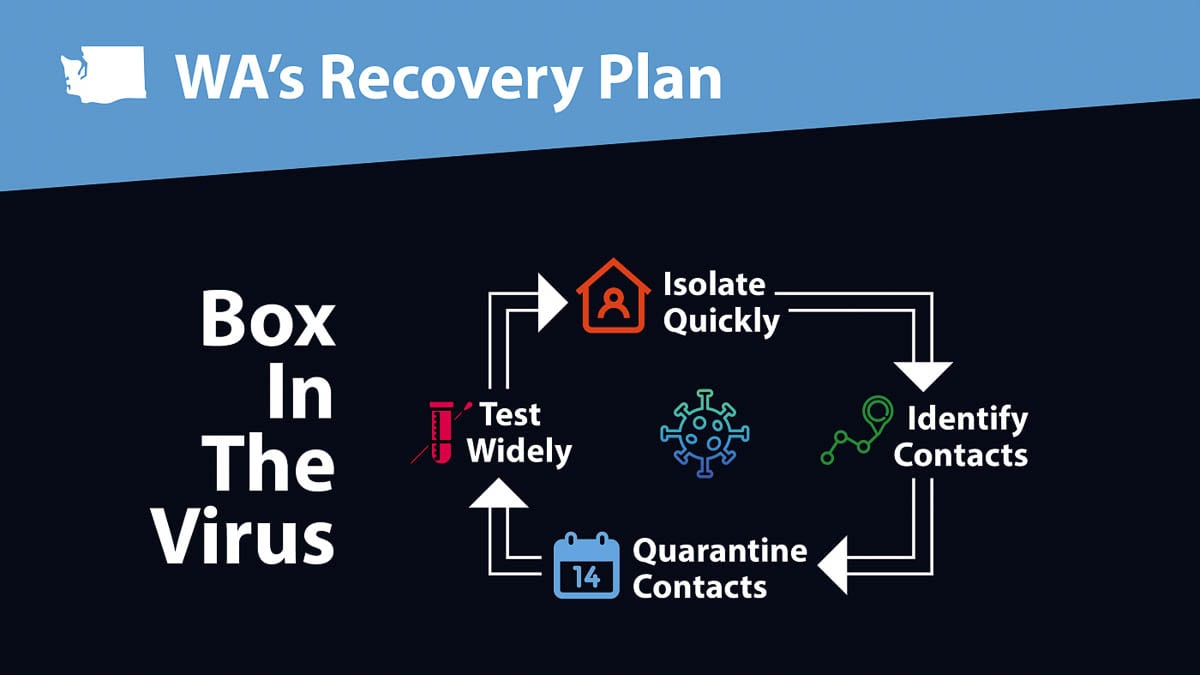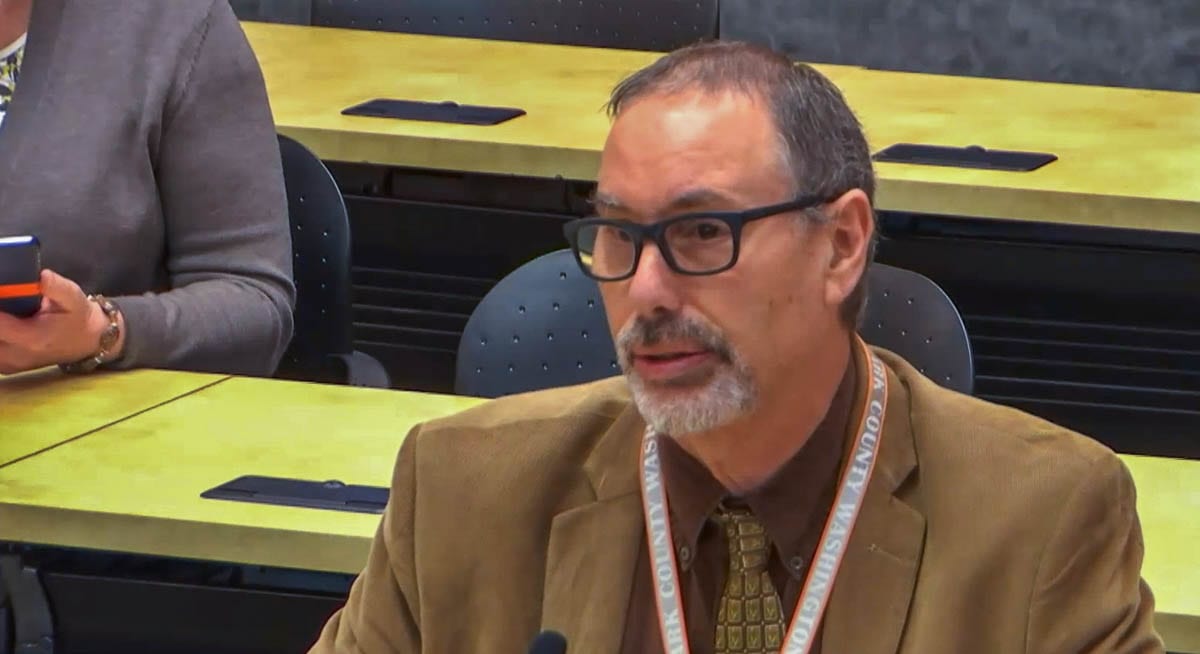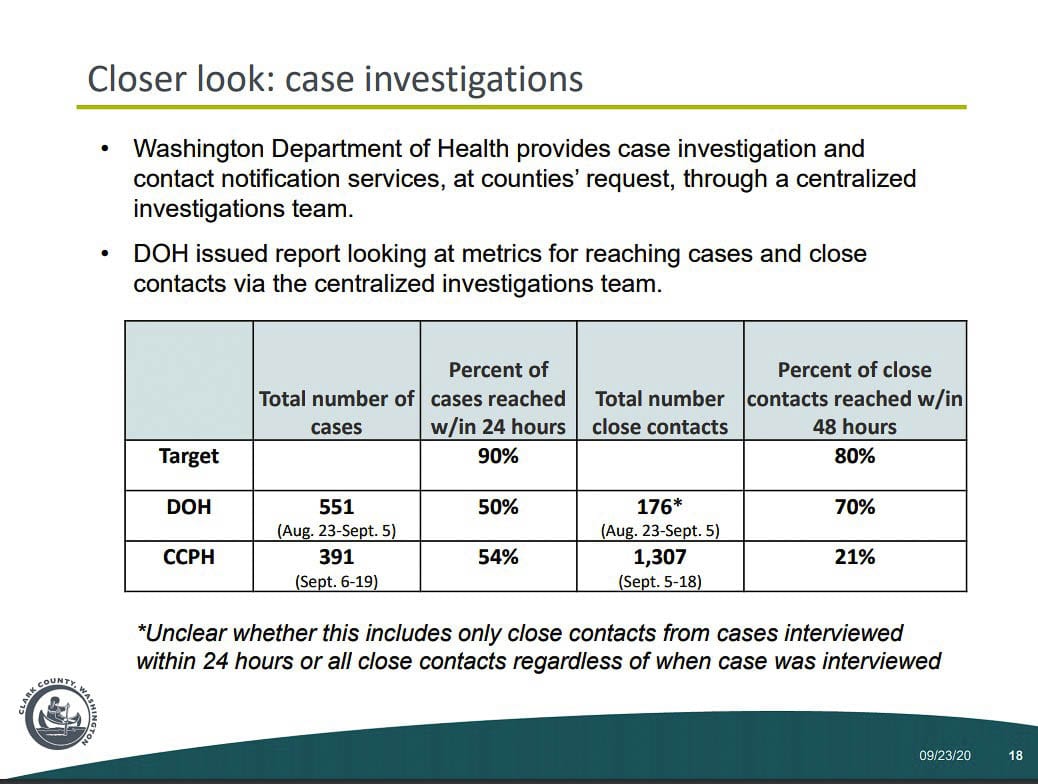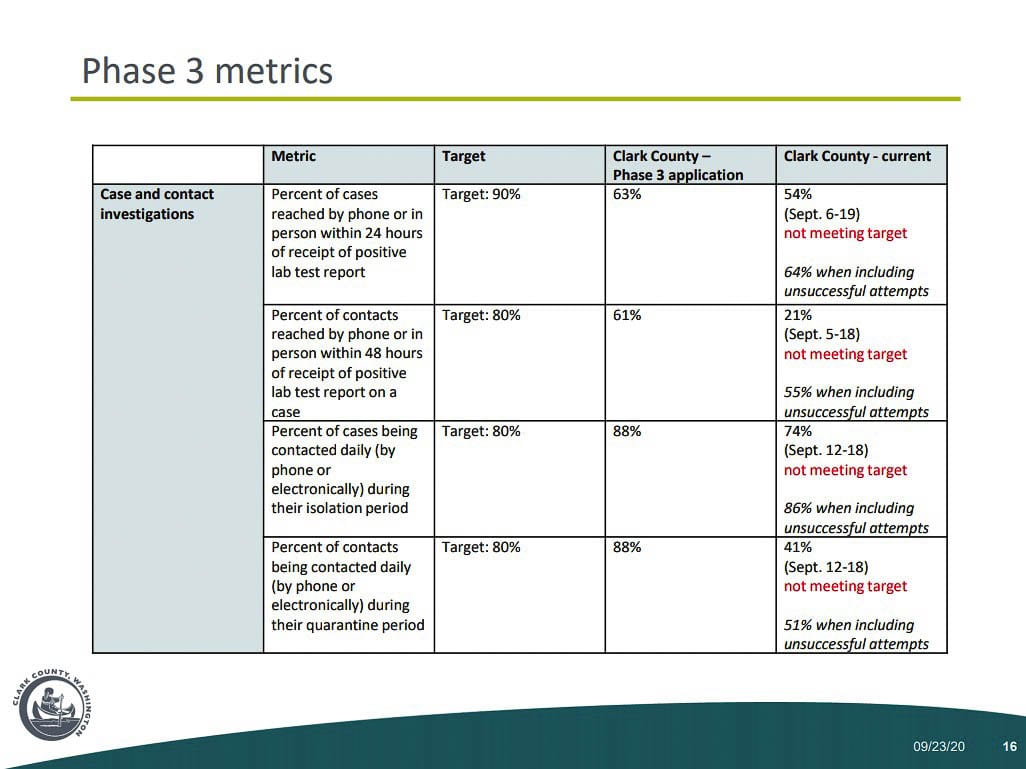Even the state Department of Health has failed to reach its own metrics, leading some to say the goalposts need to be moved
CLARK COUNTY — Last June, as Washington Gov. Jay Inslee’s Safe Start phased reopening plan began to roll out, case investigation and contact tracing was seen as a key factor in controlling the spread of COVID-19.
To facilitate those programs, the state set metrics for county health departments to reach in order to qualify for advancement to each of the four phases of reopening.

Among those was the requirement that 90 percent of new cases be contacted by a case investigator within 24 hours of a positive test result, along with 80 percent of close contacts within 24 hours of a case interview being completed.
To attempt to reach that metric, Clark County Public Health contracted with The Public Health Institute of Oregon, which allowed them to scale up their response as necessary.
At Wednesday’s Board of Public Health meeting, Clark County Public Health Officer Dr. Alan Melnick said they’ve improved their contact rate, but an outbreak last week at a Salmon Creek chiropractic clinic hurt their numbers.

“We actually brought in additional staff,” Melnick said. “Suddenly, having 300 close contacts to reach is a large number in a short period of time.”
The outbreak at ChiroOne Wellness Center of Salmon Creek, which also operates as Bridge Chiropractic, was first identified after one employee tested positive on Sept. 13. Two more employees tested positive on Sept. 17, one of which worked at the clinic on Mon., Sept. 14, a day before it was closed due to the outbreak.
“In total, we’ve identified 339 close contacts with possible exposures between the 8th and the 11th as well as on the 14th,” said Melnick.
Melnick added that, as of his presentation, 95 percent of those exposures had either been contacted, or several attempts had been made. Still, the number also has hampered the county’s ability to do daily follow-up contacts with those potential cases.
Even with more resources, however, the state’s Department of Health has also been unable to reach the very contact tracing metrics they set.
The state provides case investigation and contact notification for smaller counties without resources to do their own. Melnick noted that out of 551 positive tests reported to DOH between Aug. 23 and Sept. 5, only half had been contacted within 24 hours; 40 percent below the state’s expected benchmark.
The DOH numbers showed 70 percent of close contacts reached within 48 hours, though Melnick said he was seeking clarification about whether that measured close contacts of all cases, or only those of cases that had been reached within the 24-hour window.
“It’s hard to believe that they’re reaching 70 percent of close contacts, if they’ve only reached 50 percent of the cases within 24 hours,” Melnick said.
The numbers prompted members of the Board of Health to ponder whether, if the state can’t hit their own metrics, the targets might need to be adjusted.
“I think we’ll never get out of Phase 2 if we don’t really look at some of these targets, and some of the metrics that were set early on,” said Julie Olson. “We have some frustrated business owners and community members that are not going to be able to take it much longer.”


All phase advancements are currently paused indefinitely, as much of Washington state continues to see COVID-19 transmission rates either increasing or simply leveling off.
Olson also said she would like to see the standard for successfully reaching a close contact changed from actually connecting with them via a phone call, to simply leaving a text message or voicemail with a notification and instructions on what to do.
“Whether they get back to us or not … if we’ve left a message or a text message, that’s the point,” Olson added.
Other board members noted that the seeming disconnect between the way Clark County Public Health is measuring some of the metrics and the way the state is doing it creates a significant source of confusion.
“Every time we have a difference in how we calculate anything, and if it’s not consistent, it degrades the public’s confidence in any of the numbers we report,” said Olson.
“I think every single one of these criteria should be relooked at,” added Clark County Chair Eileen Quiring O’Brien. “We will never reach whatever the state is asking us to reach if we maintain this criteria.”
As of Wednesday, Clark County has had 3,240 confirmed cases of COVID-19, with 55 fatalities. The latest, a woman in her 80s with no underlying health conditions, was reported on Tuesday.
There are currently 156 active cases, meaning people who are still within a 10-day isolation period following a positive test.
While hospitalizations have increased in recent weeks, Clark County remains well under the 10 percent metric for COVID-19 bed space. As of Wednesday there were 29 confirmed and five suspect COVID-19 cases in Clark County hospitals, representing 5.6 percent of available beds.




